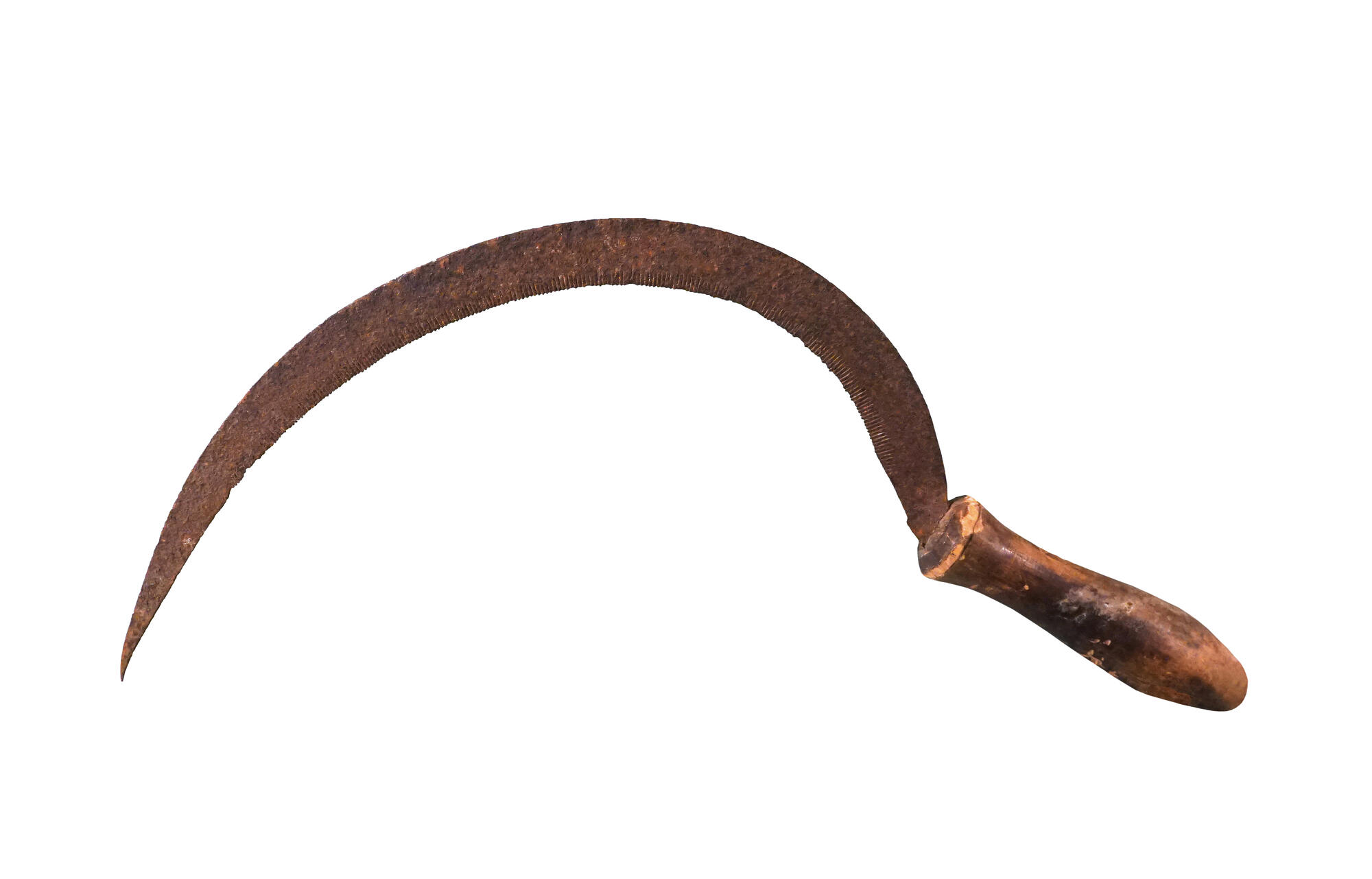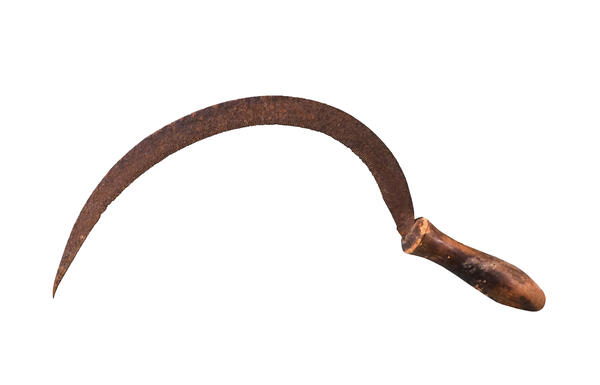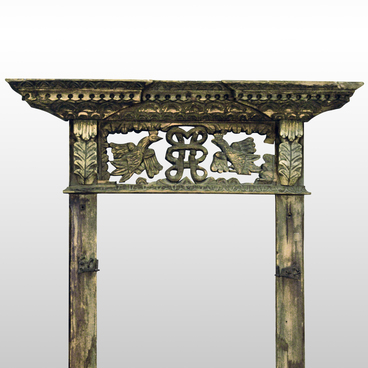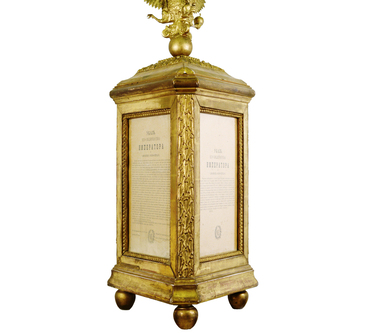Depending on the season, weather, grain maturity, and soil characteristics, peasants used different agricultural tools to harvest their crops. If there was a need to hurry, the crops were harvested with scythes. But if there was enough time to harvest, they preferred to work with a sickle: in this way, less grain was lost. Besides, women and even children could manage with a sickle: it did not require excessive physical effort.
In Oryol province at the end of the 19th — beginning of the 20th century, sickles of regular semicircular shape, typical for the European part of Russia, were used most often. They were very convenient to work with.
The sickle was held in the right hand. The narrowed blunt end of the tool separated a bundle of wheat, gripped it with the left hand, and then cut off the middle, sharpened part of the blade.
Sickles were made to order by village blacksmiths, but more often, they were purchased in village shops or at fairs. There were many artisanal workshops for making sickles in Russia. To make a tool, a blacksmith first welded steel with iron and forged blanks, which then gave the desired shape. After that, the sickle was hardened, polished, a serrated cut on the blade was made and inserted into the handle. It was carved from wood, made short and slightly tapered in the middle to make it easier to hold the tool in the hand.
Sickles differed in not only size and shape of the bend but also in the degree of hardening and shape of the teeth. In Russia of the 19th century, sickles were hardened before they were serrated, so the hardening was weak. However, so-called English sickles, which a little bit later were made in Russia, were hardened after serration, so they were much stronger.
After careful primary sharpening, English sickles were additionally machined on grinding wheels. Russian sickles were softer, so they blunted faster, but they could be easily sharpened. English sickles, on the other hand, due to a good hardening, were tough, so it was much harder to sharpen them.
The teeth on the sickle blade were made in the form of blades or needles. Blade sickles were difficult to work with in the beginning, but after the teeth had been grind down (they were said to “cut through”), the process was much easier. With sickles with teeth in the form of needles, on the contrary, it was easier to work at first, but they quickly wore out.
With sickles in Russia, there was an interesting tradition. In February, on the memory day of St. Zechariah of Serpowitz, peasant women took out sickles stuck in the hayloft bulkhead, and sprinkled them with baptismal water, saying:
In Oryol province at the end of the 19th — beginning of the 20th century, sickles of regular semicircular shape, typical for the European part of Russia, were used most often. They were very convenient to work with.
The sickle was held in the right hand. The narrowed blunt end of the tool separated a bundle of wheat, gripped it with the left hand, and then cut off the middle, sharpened part of the blade.
Sickles were made to order by village blacksmiths, but more often, they were purchased in village shops or at fairs. There were many artisanal workshops for making sickles in Russia. To make a tool, a blacksmith first welded steel with iron and forged blanks, which then gave the desired shape. After that, the sickle was hardened, polished, a serrated cut on the blade was made and inserted into the handle. It was carved from wood, made short and slightly tapered in the middle to make it easier to hold the tool in the hand.
Sickles differed in not only size and shape of the bend but also in the degree of hardening and shape of the teeth. In Russia of the 19th century, sickles were hardened before they were serrated, so the hardening was weak. However, so-called English sickles, which a little bit later were made in Russia, were hardened after serration, so they were much stronger.
After careful primary sharpening, English sickles were additionally machined on grinding wheels. Russian sickles were softer, so they blunted faster, but they could be easily sharpened. English sickles, on the other hand, due to a good hardening, were tough, so it was much harder to sharpen them.
The teeth on the sickle blade were made in the form of blades or needles. Blade sickles were difficult to work with in the beginning, but after the teeth had been grind down (they were said to “cut through”), the process was much easier. With sickles with teeth in the form of needles, on the contrary, it was easier to work at first, but they quickly wore out.
With sickles in Russia, there was an interesting tradition. In February, on the memory day of St. Zechariah of Serpowitz, peasant women took out sickles stuck in the hayloft bulkhead, and sprinkled them with baptismal water, saying:



